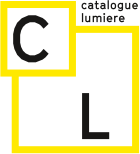This page aims at answering some frequently asked questions about specific movies.
When did the first screenings of Lumière movies occur?
- March 22 1895: private presentation of the Cinématographe Lumière, Paris, Société d’encouragement pour l’industrie nationale. Screening of the first version of La Sortie de l’usine Lumière à Lyon.
- June 11 1895: private presentation at Congrès de photographes, Lyon.
- December 28 1895: first public screening at Salon indien du Grand Café, Paris. A programme of 10 films is shown to the audience.
What were the 10 films presented in December 1895?
The listing includes the following:
1. La Sortie de l’usine Lumière à Lyon
2. La Voltige
3. La Pêche aux poissons rouges
4. Le Débarquement du congrès de photographie à Lyon
5. Les Forgerons
6. Le Jardinier
7. Le Repas de bébé
8. Le Saut à la couverture
9. La Place des Cordeliers à Lyon
10. La Mer (Baignade en mer)
What’s the meaning of dates written as [1896] – [1897]?
The dates are the estimated dates when the shooting of the film took place. Some films can be dated precisely because they show a historical event (such as Le Débarquement du congrès de photographie à Lyon). More often, a date range is provided, showing the earliest and latest possible date of production. Those dates are derived from the travel dates of the operator, the date of a public screening, or the date of publication in the Lumière catalogue.
Dates [in brackets] indicate an estimate with a degree of uncertainty.
La Sortie de l’usine Lumière à Lyon
Q: It has been frustrating trying to determine the actual dates of the Lumière films. Can you confirm that the latest research shows that the « two horse » version is the earliest? Was it likely the one shown in the December 28th, 1895 exhibition?
Indeed, several versions of that film were made (four different versions have been found in the Lumiere archive). The very first version was shot in March 1895 (presumably March 19). It was screened on March 22 in Paris at the Société d’encouragement pour l’industrie nationale. According to film historians Aubert & Seguin, this first version is lost, all four known versions are « remakes ».
The oldest version that we have copies of (91,1) was probably filmed in May 1895. It is likely that this version was presented to the audience on December 28th, 1895. In the 2015 documentary Lumière!, narrator Thierry Frémaux claims that « this is surely the version filmed in March 1895 ». Basically, we can consider that it is the first version – we won’t get an older one.
Two other versions were made in 1896, and a fourth version in 1897. This information is based on the book La production cinématographique des Frères Lumière (Michelle Aubert and Jean-Claude Seguin, 1996), and is confirmed by the audio comment by Frémaux on the 2015 documentary.
Three versions (91,1 / 91,2 / 91,3) are included on the DVD/BluRay release. Here’s how they compare:
L’Arrivée d’un train en gare de La Ciotat
Q: There is this photo at La Ciotat station, which mentions the year 1895. Is this incorrect ?
- The date (1895) given on that plate is most likely wrong. The plate is dated 1942, the state of historical research was probably not as precise as today.
- The version of that movie that is widely known (included on DVDs, visible on Youtube, etc) was actually filmed in summer 1897. This has been dated by historians based on the age of the children appearing in the movie (Suzanne Lumière, aged 3, and Madeleine Koehler, aged 2).
- There are two other versions, « non cataloguées » (not in the commercial catalogue), that have been found in the Lumière archive by the historians.
- One of those versions was shot in early 1896, as there were 32 stills used in a newspaper article about Le Cinématographe (published in La Science française, Paris, n° 59, March 13 1896, p. 89). Possibly, this version is similar to the one screened January 25 1896 in Lyon, under the title L’Arrivée en gare d’un chemin de fer.
- The other unnumbered version was possibly an alternate shot of number 653, as the vegetation is identical.

